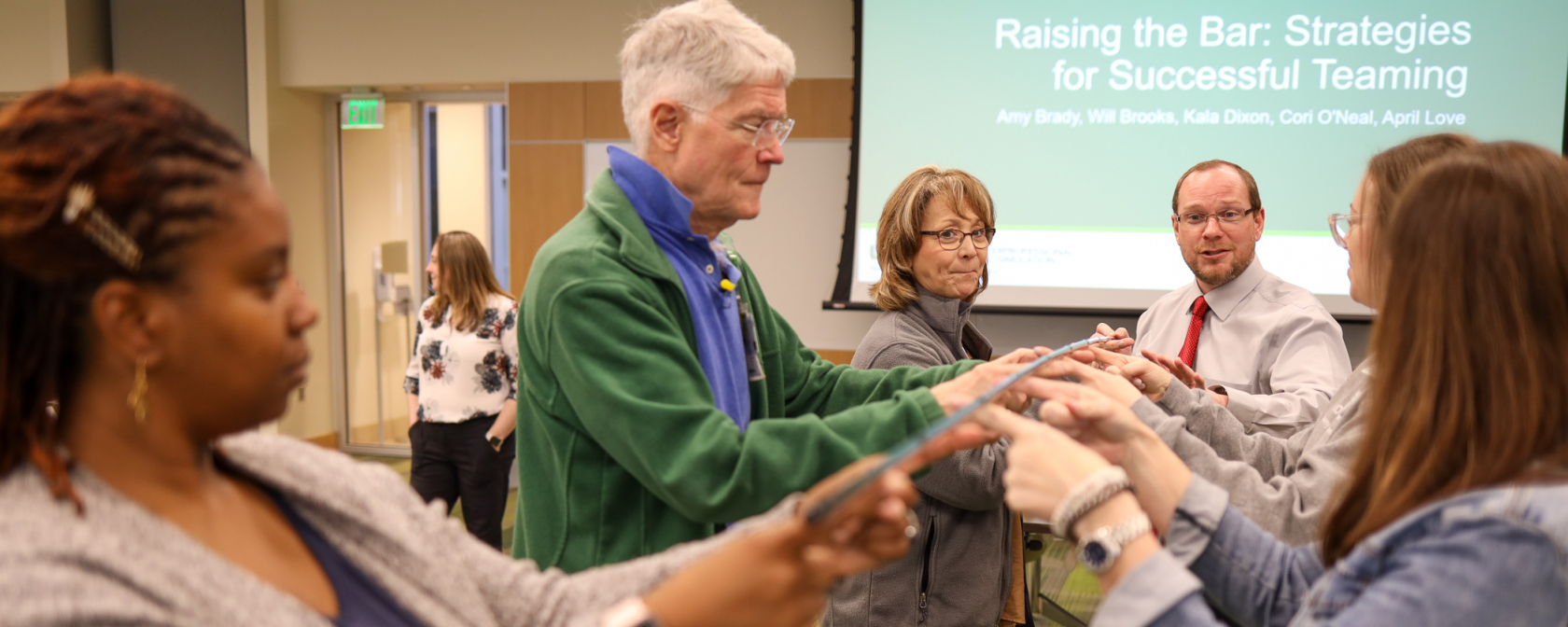Recommended Reading List
The following is a list of readings that OIPC recommends as a starting point for your journey into Interprofessional Education.
Curriculum Development: IPE and Clinical Practice
Lutfiyya, M. N., Brandt, B. F., & Cerra, F. (2016) Reflections from the intersection of health professions education and clinical practice: The state of the science of interprofessional education and collaborative practice. Academic Medicine, 91(6),766-71. doi: 10.1097/ACM.0000000000001139
Curriculum and Simulation: Are They Related?
Faculty and curriculum developers are responsible for designing curricula that accurately reflect what students will face in actual nursing practice. But what about integrating simulation into day-to-day and long-term teaching? How does implementing simulation into curricula enhance the program and ultimately student learning?
The paper explains how simulation requires a strategic developmental approach and stresses the importance of effective program evaluation and assessment.
Sim Beyond the Sim Lab
New interactive tools and technologies are bringing about innovation in nursing education – which enables students to think critically, apply knowledge in a big-picture lens, and prepare them for success in their professional practice. Whether using visual storyboards, gaming technology, virtual concept mapping, or virtual simulation mapping – interactive tools are being employed by nursing institutions to align outcomes with their teaching process. Sim Beyond the Sim Lab builds on the Debriefing Across the Curriculum paper and examines how new strategies foster active learning and how faculty and administrators can actively engage learners.
Faculty Development
Hall, L. W. & Zierler, B. K. (2015). Interprofessional Education and Practice Guide No. 1: Developing faculty to effectively facilitate interprofessional education. Journal of Interprofessional Care, 29(1), 3-7. doi: 10.3109/13561820.2014.937483
IPE Program Development
The resources below are provided as examples of IPE program development at other academic institutions.Lap Ki Chan, etal "Implementation of an interprofessional team-based learning program involving seven undergraduate health and social care programs from two universities, and students’ evaluation of their readiness for interprofessional learning
BMC Medical Education BMC series – open, inclusive and trusted201717:221 Click Here for the Article
Blue, A. V., Mitcham, M., Smith, T., Raymond, J., & Greenberg, R. (2010). Changing the future of health professions: Embedding interprofessional education within an academic health center. Academic Medicine, 85, 1290-95. doi: 10.1097/ACM.0b013e3181e53e07
Brashers, V., Owen, J., & Haizlip, J. (2015). Interprofessional education and practice guide No. 2: Developing and implementing a center for interprofessional education. Journal of Interprofessional Care, 29(2), 95-99. doi:10.3109/13561820.2014.962130
Program Evaluation
Reeves, S., Boet, S., Zierler, B., & Kitto, S. (2015). Interprofessional Education and Practice Guide No. 3: Evaluating interprofessional education. Journal of Interprofessional Care 29(4), 305-12. doi: 10.3109/13561820.2014.1003637
Oates, M. & Davidson, M. (2015). A critical appraisal of instruments to measure outcomes of interprofessional education. Medical Education, 49, 386-398. doi:10.1111/medu.12681.
Additional Resources
Avoiding One and Done: A Practical Model for Sustaining IPE ProgramsDr. Teri Kennedy of the Arizona State University presented a webinar of her Model of Sustainability. Includes practical advice and checklists to help program and curriculum designers include factors that will ensure longevity as planning and implementation take place. Click here for the slide set
The National Center for Interprofessional Practice and Education (NCIPE)
The NCIPE has compiled a library of assessment tools that can be used to assess individuals, groups, teams, practice environments, and organizations in areas related to interprofessional education (IPE) and to evaluate the impact of IPE programs and collaborative practices.
The Role of Accreditation in Achieving the Quadruple Aim
Interprofessional education (IPE) and collaborative practice continue to gain momentum within the health sector. Recently, accreditors from multiple health professions have joined together to discuss their role and to set continuing education standards for IPE and guidance for interprofessional foundational education.
